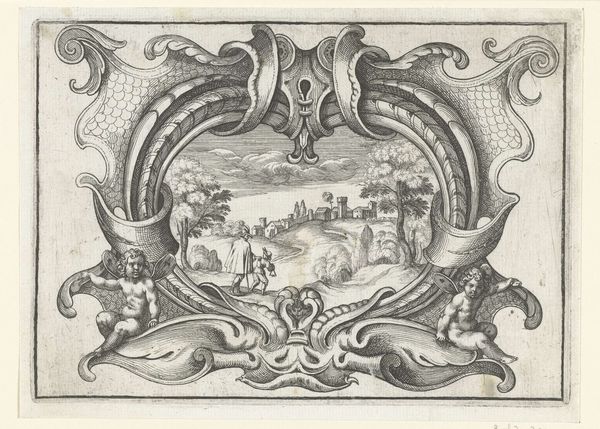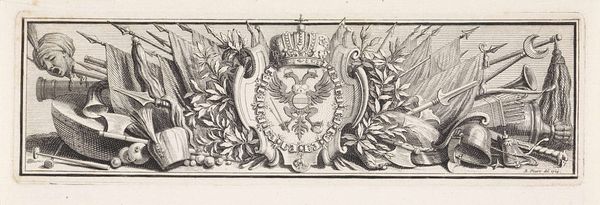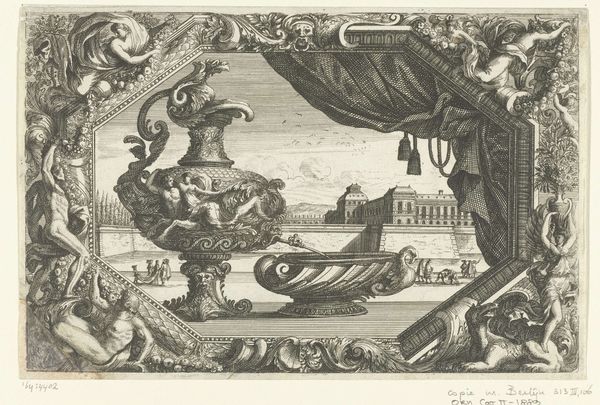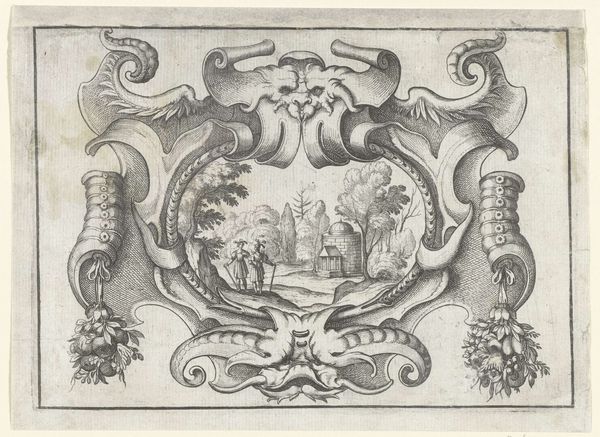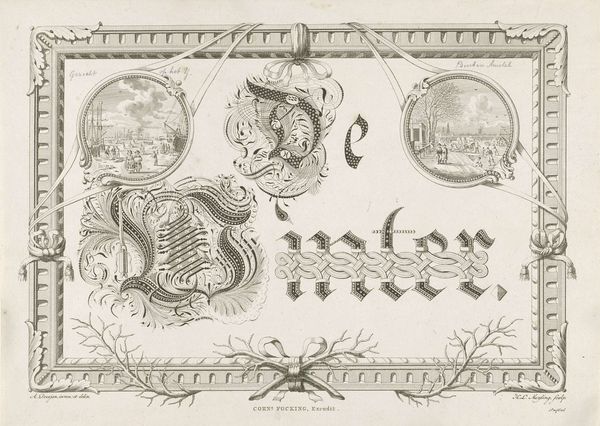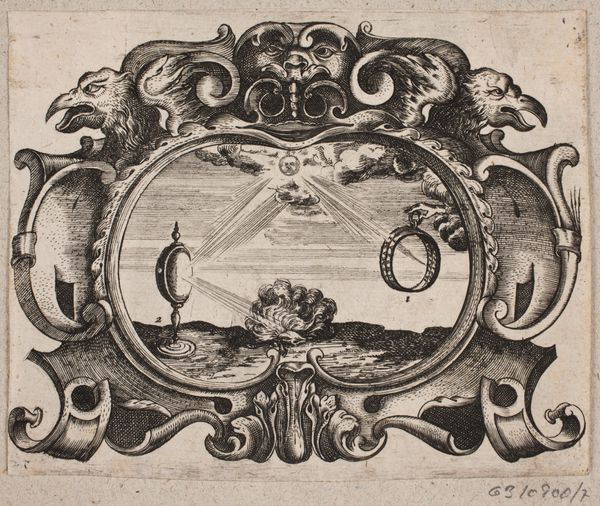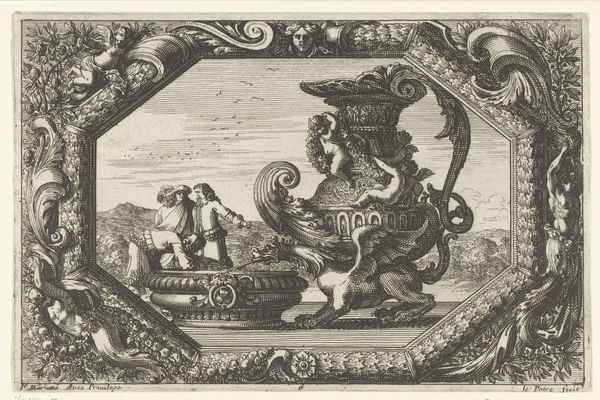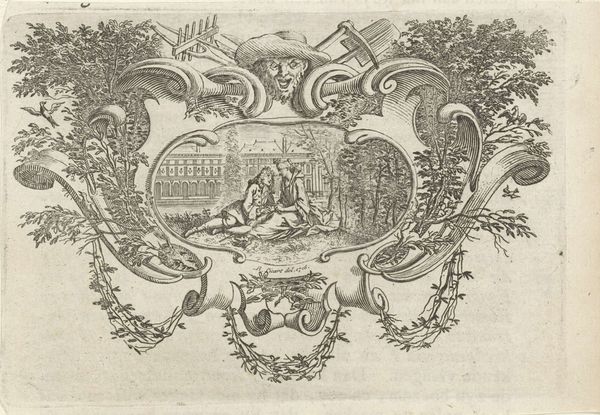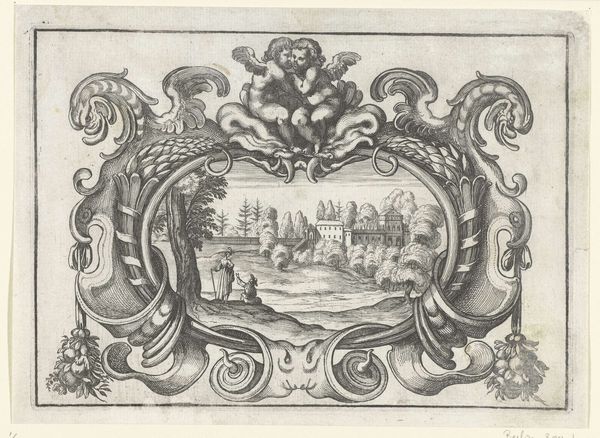
Assault of M. de Toyas on L'Ile de Re (border, upper left) c. 17th century
0:00
0:00
Copyright: CC0 1.0
Editor: So, this is Jacques Callot's "Assault of M. de Toyas on L'Ile de Re." It looks like an etching, and it’s incredibly detailed! What strikes me is the way the central image, the assault itself, is framed by such ornate decorations. What's your take on it? Curator: The framing is precisely where the work gains meaning. Look at the labor involved in creating this intricate border, and how it elevates what is essentially a piece of military propaganda. The process itself becomes a commentary on power and consumption. Editor: Propaganda? So you're saying the artistry is used to glorify military action? Curator: Exactly. The means of production are inextricably linked to the message being conveyed. The etching process, with its meticulous labor, becomes a tool to manufacture consent, so to speak. Think of the consumption of these images; who was the intended audience? Editor: That's fascinating. I never considered the labor involved as part of the message itself. Curator: The material conditions of artmaking are never neutral. Reflecting on them changes how we view art and its impact.
Comments
No comments
Be the first to comment and join the conversation on the ultimate creative platform.





